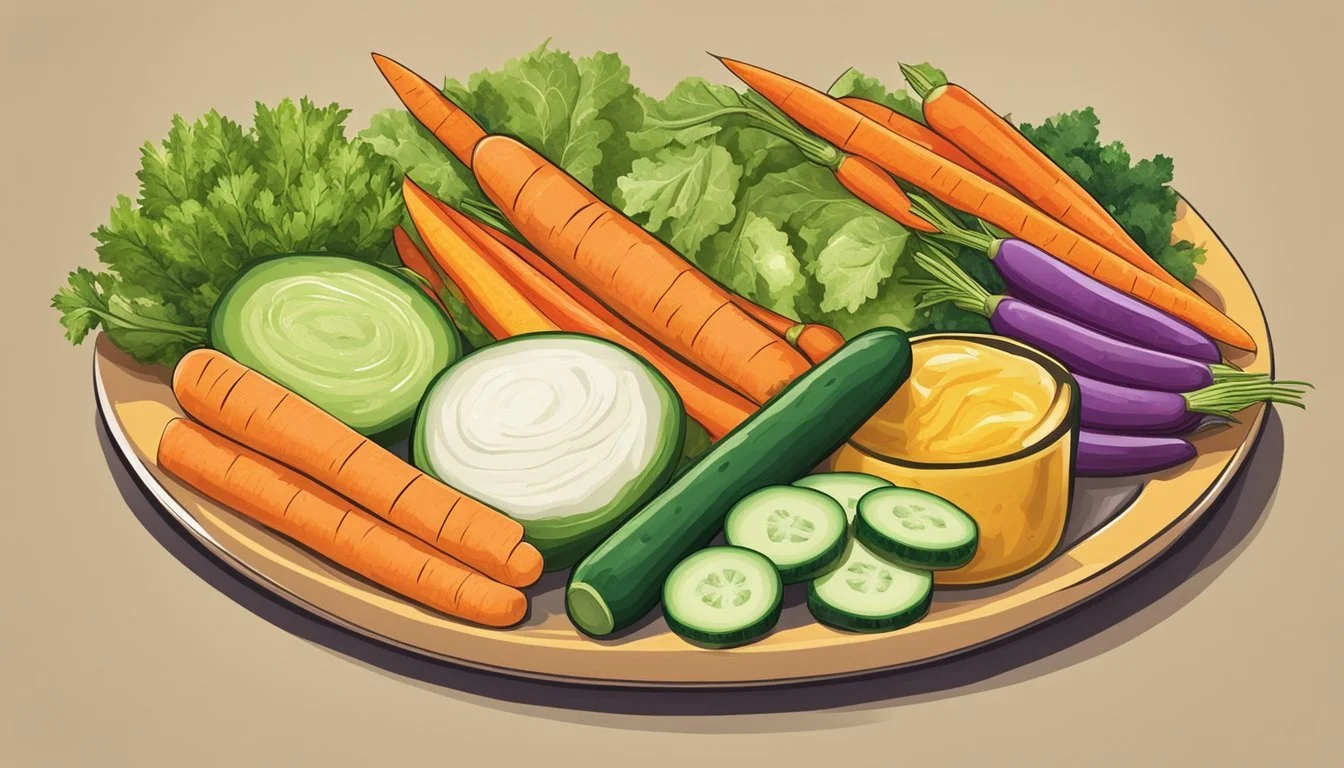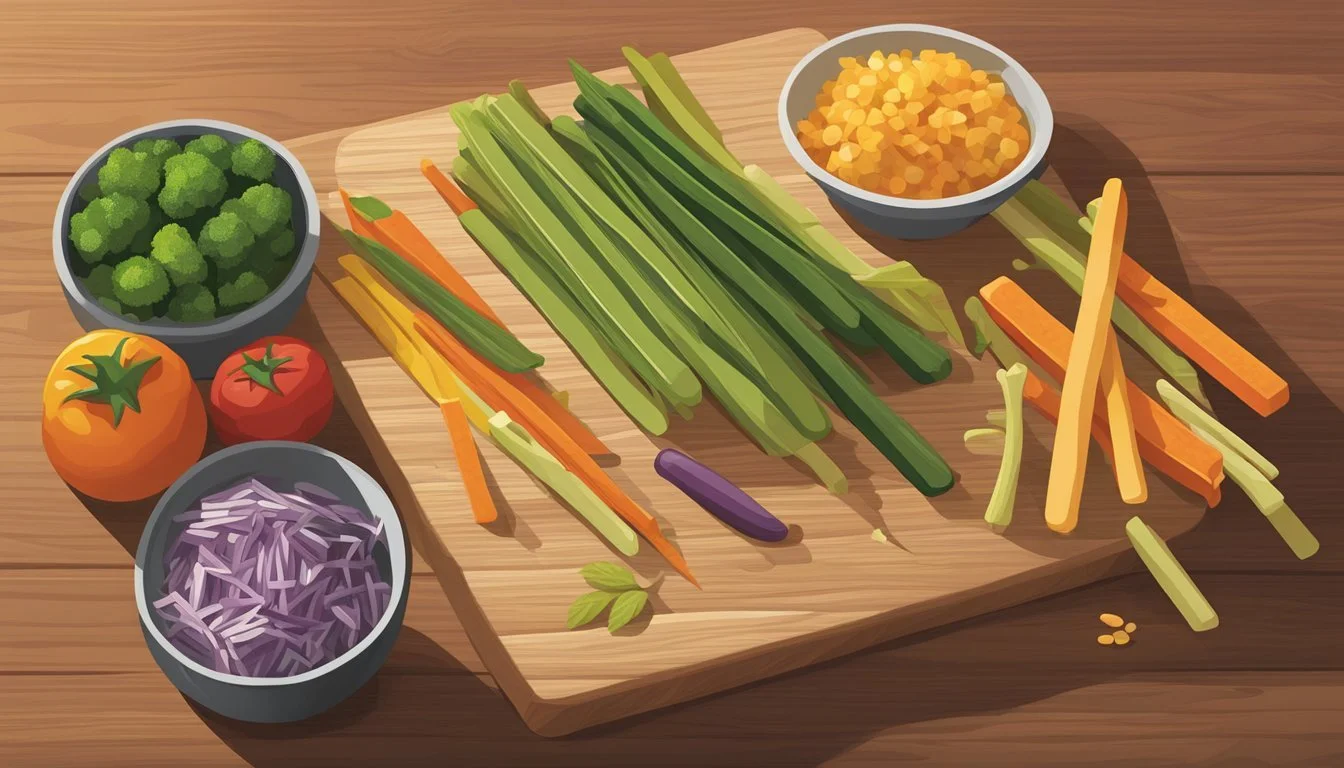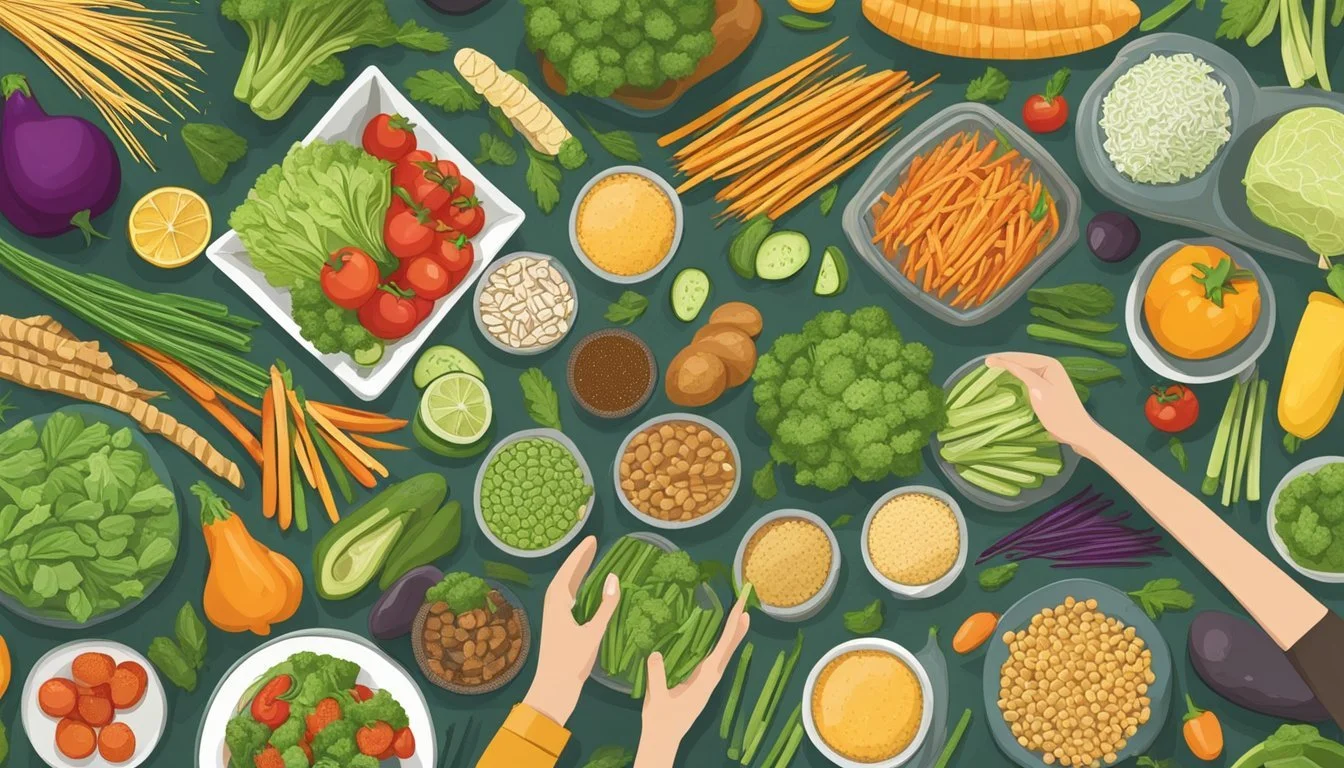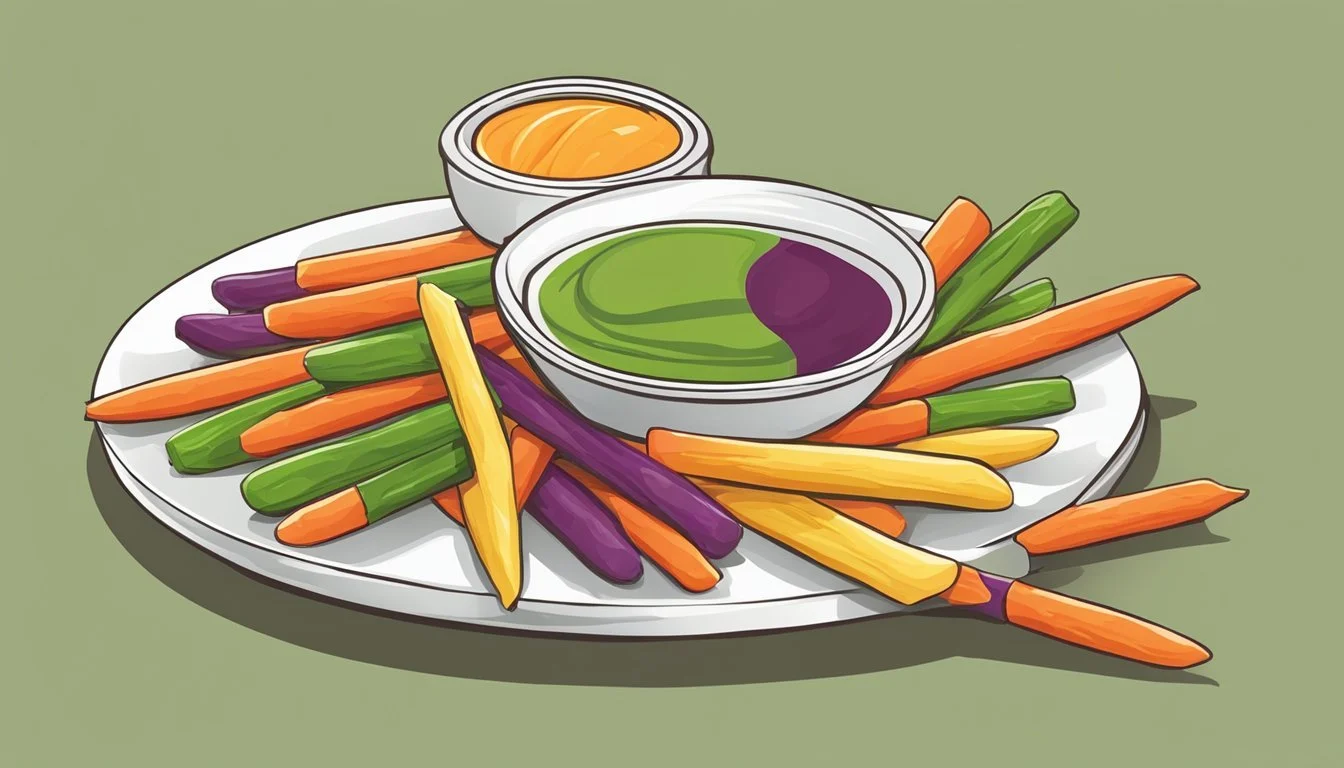Are Veggie Sticks Gluten-Free?
Understanding Their Ingredients and Benefits
Veggie sticks, a popular snack often touted for their convenience and vegetable content, are frequently considered by those looking to maintain a gluten-free diet. Gluten, a group of proteins found in wheat, barley, and rye, is avoided by individuals with celiac disease or gluten sensitivity. Many veggie sticks on the market are crafted using potato flour and cornstarch instead of wheat flour, positioning them as a gluten-free snack option. Brands like Garden Veggie Straws are certified gluten-free, indicating they are safe for individuals who need to avoid gluten.
When assessing the nutritional profile of veggie sticks, it's important to note that while they are a gluten-free alternative to traditional snacks (What wine goes well with snacks?), they often contain comparable calories and fat to regular potato chips. Despite being made from vegetables, these snacks may not always provide significant amounts of dietary fiber or protein, nutrients which are crucial for a balanced diet. The main ingredients typically include a mix of potato flour, corn starch, and oil, along with seasonings to enhance their taste.
Consumers looking for gluten-free options will find that veggie sticks can fit into their dietary requirements, provided they choose brands that ensure gluten-free processing and certification. It's advisable to check product labeling for confirmation of the gluten-free status, as formulations can differ between brands. While veggie sticks offer a convenient snacking option, those seeking nutritional benefits should consider the overall nutritional content in addition to their gluten-free claim.
Understanding Gluten and Celiac Disease
The crux of the matter lies in understanding the nature of gluten and how its presence in the diet affects individuals with celiac disease or gluten sensitivity.
What Is Gluten?
Gluten is a protein composite found predominantly in wheat, rye, and barley. It acts as a binder that gives elasticity and a chewy texture to bread and other baked goods. For most people, consuming gluten is harmless; however, for those with certain health conditions, the ingestion of gluten can trigger an adverse reaction.
Celiac Disease and Gluten Sensitivity
Celiac disease is an autoimmune disorder where the immune system mistakenly attacks the small intestine when gluten is consumed. This attack causes inflammation and damage to the intestinal lining, impairing nutrient absorption. Gluten sensitivity, also known as non-celiac gluten sensitivity, involves a negative reaction to gluten but does not cause the same intestinal damage and has yet to be linked to an autoimmune response. Symptoms of both can include abdominal pain, bloating, diarrhea, and fatigue.
Early diagnosis and treatment are essential to managing these conditions, typically through a strict, gluten-free diet.
Veggie Sticks as a Gluten-Free Snack Option
Veggie sticks are an increasingly popular snack choice for individuals seeking gluten-free options. They offer a crispy alternative to traditional snacks without the inclusion of wheat, barley, or rye.
Ingredients and Gluten Content
The primary ingredients in veggie sticks typically include potato flour, corn starch, rice flour, and various seasonings. These base ingredients do not contain gluten, which is a protein found in wheat, barley, and rye. Additionally, veggie sticks often incorporate vegetable powders for coloring and flavor, such as tomato, spinach, and beetroot, which are also naturally gluten-free.
List of common gluten-free ingredients in Veggie Sticks:
Potato flour
Corn starch
Rice flour
Vegetable powders (e.g., tomato, spinach, beetroot)
Oil
Sugar
Seasonings
Certification and Labeling
For a snack to be considered safe for gluten-free diets, it should be certified by a recognized gluten-free certification program. Certification involves testing products to ensure they meet strict standards for gluten content. Veggie sticks that are labeled as certified gluten-free have undergone such testing and are monitored to ensure they comply with these standards.
When inspecting labels, it is important to look for terms like "certified gluten-free" or similar endorsements. Such labels indicate that the snack has been scientifically tested to contain less than a specified amount of gluten – generally less than 20 parts per million (ppm), which is the threshold set by various health authorities. These labels also help consumers identify products that are safe for those with celiac disease or gluten sensitivity.
Gluten-Free Certification Indicators to Look for:
Certified gluten-free symbol
Endorsements from recognized gluten-free organizations
Listing of potential allergens, assuring absence of wheat or other gluten-containing grains
Nutritional Considerations of Veggie Sticks
Veggie sticks appeal to health-conscious consumers with their plant-based origin and often gluten-free recipes. This section examines their nutritional profile, including caloric content, macro- and micronutrients, and the presence of additives and preservatives.
Caloric and Fat Content
Veggie sticks typically offer a lower calorie count compared to traditional potato chips. A standard serving size may contain around 100-150 calories. The total fat content can vary, but it's common to find 7-10 grams per serving, with a minimal amount of saturated fat. They are often marketed as a lighter alternative, but the actual caloric and fat savings should be checked against serving sizes.
Macro- and Micronutrients
Protein and fiber are crucial for a balanced diet, yet veggie sticks often contain less than 1 gram of protein and up to 3 grams of fiber per serving. They can be enriched with vitamins and minerals from the vegetable ingredients used, although this is usually not significant enough to contribute meaningfully to daily recommended intakes.
Nutrient Typical Amount Per Serving Calories 100-150 Total Fat 7-10g Fiber <1-3g Protein <1g Sodium Variable
Additives and Preservatives
While veggie sticks may contain natural ingredients, they can also include various additives and preservatives to enhance flavor and shelf life. Common additions are salt, which contributes to sodium levels, and sugars. Manufacturers might also use oils in the cooking process, which can affect the total fat count. It's important for consumers to read labels to understand the full composition of these snacks.
Comparing Veggie Sticks to Other Snacks
In evaluating Veggie Sticks as a snack choice, it is critical to compare their nutritional content and gluten-free status with other common snack options such as potato chips, tortilla chips, and various gluten-free snacks.
Veggie Sticks vs. Potato Chips
Veggie Sticks distinguish themselves as a potato-based snack that often contains additional vegetable ingredients. While potato chips are typically high in fat due to being fried, Veggie Sticks may offer a slightly healthier alternative with variations that are baked. However, Veggie Sticks can still be processed and may contain comparable calorie counts and sodium levels.
Fat Content: Veggie Sticks tend to have less fat than traditional potato chips.
Gluten-Free: Unlike some potato chips, many Veggie Sticks are explicitly labeled gluten-free.
Veggie Sticks vs. Tortilla Chips
Tortilla chips are usually made from corn and can be a gluten-free option, much like Veggie Sticks. However, nutritionally, they have similarities in calorie density and the tendency to be high in salt.
Fiber Content: Veggie Sticks contain negligible dietary fiber, a nutrient often more present in corn-based tortilla chips.
Processing: Both Veggie Sticks and tortilla chips are highly processed foods.
Veggie Sticks vs. Other Gluten-Free Options
When compared to other gluten-free snacks, Veggie Sticks might fall short in nutritional value. Many gluten-free alternatives offer higher protein or fiber, while Veggie Sticks remain relatively low in both.
Health Claims: Some gluten-free snacks are designed with health-conscious consumers in mind and may integrate whole food ingredients.
Baking vs. Frying: Gluten-free snacks vary widely in preparation; Veggie Sticks are commonly baked or fried, impacting their overall healthfulness.
The Production Process of Veggie Sticks
Veggie sticks, known for their crisp texture and savory taste, go through a meticulous production process. This process ensures the final product is both enjoyable and meets specific dietary needs, such as being gluten-free.
Ingredients and Their Sources
In crafting veggie sticks, manufacturers start by selecting gluten-free ingredients. Potato flour and corn starch often serve as the base, providing the necessary structure and crispiness. Vegetables like spinach, potatoes, (What wine goes well with potatoes?) and sweet potato contribute to the nutritional profile and distinctive flavors of the snacks. These are processed into a flour or paste to be incorporated into the veggie stick mixture. Oils such as sunflower, canola, and safflower oil are commonly used due to their neutral taste and suitability for high-heat cooking.
Sources of Ingredients:
Potato flour: Derived from dried and ground potatoes.
Corn starch: Extracted from the endosperm of corn kernels.
Vegetables (spinach, potatoes, sweet potato): Obtained from farms, they are cleaned, peeled, and processed.
Oils (sunflower, canola, safflower): Sourced from their respective seeds and refined for culinary use.
Baking and Frying Techniques
The production of veggie sticks may involve either baking or frying methods. Baked veggie sticks are prepared in an oven, which results in a lighter, less oily snack. Manufacturers often use this technique to appeal to health-conscious consumers seeking a lower-fat option.
Baking Process Overview:
Preheat the oven to a specific temperature.
Spread the veggie stick mixture evenly on trays.
Bake until crisp and reach desired texture.
In contrast, frying involves cooking the sticks in hot oil, which can be deep-fried in large industrial fryers. This technique imparts a rich, indulgent flavor and a satisfying crunch but typically results in a product with a higher fat content.
Frying Process Overview:
Heat the oil (typically sunflower, canola, or safflower) to a high temperature.
Fry the sticks until they have achieved a golden-brown hue.
Drain excess oil before packaging to maintain crispness.
Flavor and Texture Profile
Veggie sticks offer a dynamic culinary experience influenced by their components' flavor profiles and the methods used to process them into their final form.
Ingredients Affecting Taste
The taste of veggie sticks is predominantly determined by their blend of vegetables and spices. Key ingredients often include:
Spinach powder: Contributes an earthy undertone.
Tomato paste: Offers a subtle tanginess.
Turmeric: Adds a warm and peppery zest.
Garlic powder: Provides a sharp, savory edge.
Onion powder: Imparts a slightly sweet and pungent kick.
These ingredients, combined with a careful selection of sea salt and additional seasonings, create a snack that's flavorful and enjoyable.
Texture Achievements Through Processing
The texture of veggie sticks is a result of both the ingredients and the manufacturing processes they undergo. Characteristics include:
Crispiness: Achieved through frying or baking methods that dehydrate the veggie sticks to a satisfying crunch.
Lightness: Often the result of using flours such as potato or rice flour, which result in a less dense product.
Throughout the processing, it's the right balance of heat and time that ensures a consistent texture is achieved, one that mirrors the much-loved crunch found in traditional snack foods.
Dietary and Lifestyle Considerations
Veggie sticks are an option for various diets due to their gluten-free nature and potentially simple ingredient lists. However, it’s important to consider their nutritional content in the context of a balanced diet.
Veggie Sticks for Different Diets
Veggie sticks can suit a range of dietary preferences:
Vegan: They often do not contain animal products, making them suitable for vegans.
Kosher: Most veggie sticks are kosher if produced in compliance with kosher standards.
Dairy-free: Typically dairy-free, they are appropriate for those avoiding lactose or dairy.
However, individuals should read the labels carefully, as some brands might include additives not suitable for all diets.
Eating Veggie Sticks in a Balanced Diet
Nutritional Overview:
Protein: Veggie sticks generally contain minimal protein, so individuals should ensure protein intake from other sources.
Fiber: They may provide around 3 grams of dietary fiber per serving, contributing to digestive health.
Sugar & Fat: The sugar and fat content can vary largely; some are cooked in oil, raising the fat content.
Healthy Snack: Considering veggie sticks as a healthier alternative to traditional snacks depends on their specific nutrient content and the overall balance of one's diet.
Table of Nutritional Information for a Standard Serving of Veggie Sticks:
Nutrient Amount Protein < 1g Fiber ~3g Sugar Varies Fat Varies
Consumers should consider these points to maintain a healthy and balanced nutritional intake.
Best Practices for Storing and Serving Veggie Sticks
To ensure freshness and maintain taste, proper storage and serving methods for veggie sticks are crucial. These guidelines will help maximize longevity and enhance enjoyment.
Storage Recommendations
When storing veggie sticks, one should always keep them in a cool, dry place to preserve their crispness and flavor. The original packaging is typically designed to maintain freshness, but once opened, transferring the sticks to an airtight container is recommended. If necessary, veggie sticks can also be stored in the refrigerator, but this can sometimes affect their texture.
Pantry: Store in airtight containers at room temperature for short-term storage.
Refrigerator: If longer storage is needed or the climate is particularly warm, placing them in the fridge can extend their shelf life; ensure they are sealed tightly to avoid moisture.
Avoid freezing veggie sticks as freezing can alter their texture and taste, making them less enjoyable upon thawing. It's essential not to expose them to heat or direct sunlight to prevent them from becoming stale or soggy.
Serving Suggestions
Veggie sticks are versatile and can be enjoyed on their own or with a variety of dips to enhance their flavor. Popular dip choices include hummus, guacamole, and sour cream-based dips.
Dip Pairings:
Hummus: A creamy and savory option rich in protein.
Guacamole: Perfect for those who favor a zesty, fresh taste.
Sour Cream: A classic choice that pairs well with the neutral taste of many veggie sticks.
Serving veggie sticks at room temperature is generally best to appreciate their intended flavor and crispness. However, if one prefers warm veggie sticks, a short stint in the microwave is permissible, though microwaving may soften them. Sensible portion sizes are encouraged to prevent overindulgence and to enjoy veggie sticks as part of a balanced diet.
Understanding Food Safety and Allergen Considerations
When assessing whether veggie sticks are gluten-free, it is crucial to evaluate allergen information and understand the risks of cross-contamination. These factors are vital to ensure food safety for individuals with gluten sensitivity.
Allergen Information
Manufacturers are required by law to provide allergen information on food labels. For those with gluten sensitivity, scrutinizing labels for the presence of gluten or wheat is essential. Veggie sticks may seem inherently gluten-free, but they can contain flavorings or additives derived from gluten-containing grains. The safest option for gluten-sensitive individuals is to look for products explicitly labeled as gluten-free, which indicates they meet regulatory standards—typically less than 20 mg/kg or 20 parts per million of gluten.
Manufacturing and Cross-Contamination
Cross-contamination occurs when gluten-free items come into contact with gluten during production. Facilities that process both gluten-free and gluten-containing foods significantly increase this risk. It's important that gluten-sensitive consumers are aware that even if veggie sticks are made from naturally gluten-free vegetables, the final product could become cross-contaminated if shared equipment or facilities are in use.
Best Practices to Avoid Cross-Contamination
Dedicated gluten-free production lines or facilities
Regular testing of products for gluten traces
Clear packaging labels indicating if a product was made in a shared facility
Common Questions About Veggie Sticks
Veggie sticks are a popular snack choice for many looking to satisfy their crunch cravings. With the rise in gluten-free diets and the continuous quest for healthier snack options, it's important to understand how veggie sticks fit within these categories and their nutritional value compared to whole vegetables.
Are Veggie Sticks Truly Gluten-Free?
Most veggie sticks on the market, including Garden Veggie Straws, are labeled as gluten-free. They are often made with ingredients like potato flour and rice flour, which do not contain gluten, making them a suitable snack for those with gluten sensitivities or celiac disease. However, individuals should always check the packaging to ensure the product is certified gluten-free, as cross-contamination during processing could be a concern for those with severe allergies.
Can Veggie Sticks Be Part of a Weight Management Diet?
When considering veggie sticks for weight management, one must note their calorie content. While they might be lower in calories compared to some other snack options, they are not necessarily low in calories outright. A single serving might contain more calories than anticipated, so moderation is key. Veggie sticks also have varying amounts of fiber, but often less than what is found in whole vegetables, which are essential for a feeling of fullness and digestive health.
How Do Veggie Sticks Compare to Eating Whole Vegetables?
Compared to whole vegetables, veggie sticks generally have less fiber and fewer nutrients, as the processing can strip away beneficial components. Whole vegetables provide a broader range of vitamins, minerals, and other beneficial compounds such as antioxidants. Veggie sticks can be a convenient, non-perishable, and gluten-free snack, but they should not be considered a direct substitute for the nutrient-rich variety of whole vegetables in a balanced diet.
Conclusion
Veggie sticks offer a gluten-free snack option for those with gluten intolerance or for individuals seeking a wheat-free alternative. Ingredients such as rice flour and corn starch replace traditional wheat-based components, providing the necessary crunch and binding without the use of gluten.
Nutritional Considerations:
Gluten-free
Similar calorie count to potato chips
Low protein and fiber content
Despite the gluten-free benefits, one should not mistake veggie sticks for a high-nutrient snack. The protein and fiber content is considerably lower compared to other snacks. However, the absence of wheat products enables those with celiac disease or gluten sensitivity to enjoy veggie sticks without concern.
In terms of flavor, seasonings like herbs and spices enhance the snack’s appeal. It is essential to review the ingredients list to confirm the absence of gluten, as formulations may vary between brands.
Buyer’s Tip:
Always check the packaging for a "gluten-free" label
Review ingredients lists for hidden sources of gluten
Consumers looking for a convenient, gluten-free option can opt for veggie sticks while being aware of their nutritional profile.







